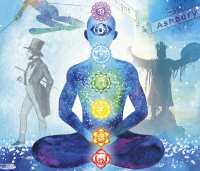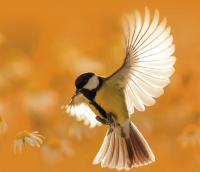
Reiki: A Self-Practice To Live in Peace with Self and Others
By Elise Brenner and Nancy Spatz, MD . From www.o-books.com
We don’t have to look far to see that today, many of our capacities to manage personal and societal pressures are resulting in lives filled with distress and overwhelm. The resulting anxiety is so pervasive and applies to people of all ages, backgrounds, and health conditions. While fear is evolutionarily built into humans for survival value, today we may feel vulnerable and threatened when faced with –perhaps not always survival per se—but the ongoing, everyday uncertainties and complexities of modern life, as well as structural forces that bring harm and disadvantage.
We can naturally worry about the future. We may worry about those that are vulnerable. We may feel angry or scared. The result is that our nervous systems get hijacked by fear and we become stuck in sympathetic mode. The provocative news cycle and social media encourage fear, thereby contributing to our hyper-arousal. In these pandemic times, all of this is alarmingly and understandably heightened. As H.L. Mencken noted, “The whole aim of politics is to keep the populace alarmed, and hence clamouring to be led to safety by an endless series of hobgoblins, most of them imaginary.” What happens is that we then perceive people, situations, and events from the lens of this fear reaction.
The ways we cope with the experience of anxiety stem from the sympathetic nervous system: we experience fight or flight. We get busy, we numb ourselves out with substances and entertainment, we complain, we attack others or ourselves, we reach for quick fixes outside of ourselves. The one thing we tend not to do is stop and practice mind-body skills that allow us to pause in a space of stillness and facilitate a shift into the parasympathetic nervous system. Mind-body skills rooted in Reiki teachings and practice are a user-friendly antidote to this amplification of our hyper-aroused anxiety state, inviting self-awareness, self-regulation, resilience and courage.
Reiki: A Self Practice to Live in Peace with Self and Others gently leads people into drawing on Reiki mind-body skills to sustain wellbeing day-to-day; to address challenges both big and small; and to live in peace with self and others even in the midst of uncertainties and crises. The book offers a fresh perspective on Reiki practice, informed by the authors’ backgrounds in psychiatry, anthropology, and public health, as well as their direct experience of decades of Reiki training, continuing education, community outreach, and practice.
Readers learn how to practice Reiki mind-body skills by using themselves as the instrument. Relying on oneself allows us to settle and calm our own nervous system at any moment, encouraging mindfulness and resilience. Relying on oneself can be empowering in ways that differ from receiving a Reiki treatment from a Reiki practitioner. The skills readers learn are down-to-earth mind-body skills rooted in the system of Reiki. Reiki: A Self Practice to Live in Peace with Self and Others is an egalitarian, accessible, user-friendly approach to learning traditional Japanese Reiki practices. While Japanese Reiki practices may seem esoteric, and contemporary American Reiki practices may seem New Age-ey, our book demystifies traditional Japanese Reiki practices and stays away from any New Age additions to the traditional Japanese practice of Reiki. Readers learn the whys and hows of practicing the essential Reiki self-practices for themselves and how they can build this practical, sustainable practice into their lives.
To add spice and relate-ability, Reiki: A Self Practice to Live in Peace with Self and Others, is laced with poignant anecdotes that tell stories of how Reiki practice has helped real people in all stages of life navigate through difficult personal and societal challenges and distress. Additionally, Reiki practice may not always be a one-size-fits-all, so a chapter in the book speaks to the ways in which the practice of self-Reiki is supportive of specific populations and specific anxiety-producing life challenges: adolescents, aging, burnout, children, illness, parenting, relationships. The book is unique, too, in that the authors bring in illustrative, memorable, enticing analogies and metaphors for elements of Reiki practice. These metaphors and analogies make the self-Reiki meditation and healing experience accessible and possible for every reader.
An example is using the image of the "snow" settling down in a snow globe to be suggestive of our own capacity to settle our thoughts and emotions with Joshin Kokyu ho Reiki meditation practice, so we can "see the scene in the snow globe" more clearly, or gain clarity on our own thoughts, feelings, and experiences. These analogies, and others, are matched, as noted above, by realistic anecdotes that portray individuals in everyday situations in which their Reiki practice restores ease to the moment, the situation, and even their lives.
Reiki: A Self Practice to Live in Peace with Self and Others does not simply point to an experience, but offers readers the rationale and detailed instructions for having a direct experience themselves by immersing in the Reiki meditations, engaging with the Reiki Precepts, and practicing hands-on self-Reiki. Further, these mind-body practices are placed in their historical and cultural contexts. We include the dimension of presenting the basic physiology that underlies the stress response and the relaxation response, and how Reiki practice can change our biochemistry and down-regulate the nervous system.
Reiki practice is presented as both a salutogenic, preventative approach to well-being, as well as a way we can address existing health conditions. By shifting the nervous system from sympathetic to parasympathetic mode, self-Reiki practices create the inner physiological, emotional, and mental terrain for mindfulness, resilience, healing, and wellness.
The authors’ approach to self-Reiki practice includes a focus on mindfulness. Mindfulness-Based Stress Reduction is not the only mindfulness and resilience-building practice. Japanese Reiki practices introduced in this book include meditations that allow an opening of self-awareness, equipping all of us to bring a mindful and caring curiosity to our experiences, thoughts, words, and actions.
Reiki: A Self Practice to Live in Peace with Self and Others is unique is its grounding in anthropology, psychiatry, and public health resulting in a focus on both the individual experience of suffering as well as the upstream, societal context within which individual suffering occurs. As Ralph Waldo Emerson wrote, “Only to the degree that people are unsettled is there any hope for them.” Chapter 11, for example, addresses social injustice and proposes that, with our ongoing Reiki practice, we transcend the confines of the self and become increasingly conscious of the injustices built into our society and its institutions. Reiki practice encourages a participation consciousness, as well as a sacred outlook, in which we move beyond self-growth to collective growth. When we are free from self-absorption and self-importance, we are open to caring for all others, for choosing to work for a fairer, more sustainable world. There is a well-known story from Thich Nhat Hanh that teaches that in times of fear and uncertainty, our own steadiness can become an anchor for others. He writes, “When the crowded Vietnamese refugee boats met with storms or pirates, if everyone panicked, all would be lost. But even if one person on the boat remained calm and centered, it was enough. It showed the way for everyone to survive.” Reiki: A Self Practice to Live in Peace with Self and Others provides specific skills so readers can claim their calm and centered selves to keep the "boat" safe.
Reiki: A Self-Practice To Live in Peace with Self and Others
By Elise Brenner and Nancy Spatz, MD is available from www.o-books and from where ever books are sold.
CLICK THE BOOK COVER TO READ TODAY
COMING SOON
FROM FRANS STIENE
The Way of Reiki - The Inner Teachings of Mikao Usui
The roadmap to deepen your understanding of the system of Reiki and rediscovering your True Self.
The Way of Reiki guides us on the path to becoming a better human being, softening our anger and worry so that we can live in a world of compassion and kindness. It is a must read for any Reiki practitioner or teacher who wants to bring more love into their practice, teachings and the world.
NEXT ARTICLE
Beyond Sex and Soup: How to speak your body’s language.
O-Books is a leading publisher of Body, Mind, Spirit books.
We publish spirituality, personal development and self-help titles, working in partnership with authors to produce authoritative and innovative books. Our authors offer wisdom from ancient teachings, with new perspectives and interpretations. O-Books aim to enlighten and inspire our readers.
Categories:
0 comments on this article
















